The Last of Us Message Board older than one year ago





The cash infusions for the UK retail market didn't end with The Last of Us, as Nintendo's Animal Crossing: New Leaf debuted in second and became (wow, y'all love your Tom Nook debt programs) the biggest non-Mario 3DS launch ever. The UK top ten indentured to Tom Nook can be found after the break.








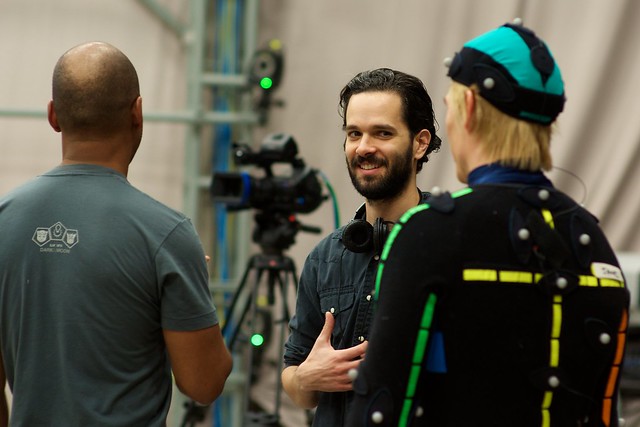
As many of you will have seen, the review scores are finally in for The Last of Us – the brand new PS3 title from Uncharted studio Naughty Dog. At the time of writing, its Metacritic score sits at a mighty 95/100, cementing its place as one of the very finest video games of this console generation. Perfect scores came in from some of the toughest critics in the business, including Eurogamer, Edge and Videogamer.
In just seven days’ time you’ll be able to judge for yourself, but in the meantime I caught up with the game’s Creative Director Neil Druckmann to delve into the project’s origins, its development and the studio’s thoughts on the finished product. He was in fine form – just as we started talking, he was handed an early print-out of the very first review – that Edge 10/10. Read on for some great insight into video game development at the very highest level.

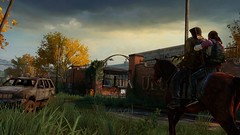
Neil, you’ve been tasked with creating a brand new IP and following the hugely successful Uncharted series. Do you feel much pressure on your shoulders?
Neil Druckmann: Absolutely, just because it’s a new position for me as writer and creative director. But I guess it’s less so much for people outside the studio and more about me wanting to make the team proud. I’ve said this before but I feel I’m surrounded by the most talented people in the industry and often I feel I’m out of my league, so it’s more like making sure they’re proud of the work we’re doing. It was really gratifying when we wrapped this thing up to have a lot of people compliment the project and say how proud they were of it.
Joel and Ellie aren’t your typical video game heroes. How confident are you that they can become gaming icons in the same way that Nathan Drake and Crash Bandicoot did before them?
Neil Druckmann: I don’t know about them becoming icons, but I will say that having seen how people play the game and seeing their reactions, I can say confidently that these will stand as two of the best ever performances in a video game. It’s a bold claim, but these guys really blew us away. Not only that but we’ve had a bunch of focus testers play the game and have had people actually cry. They’d come up to us and say “I’ve never felt so attached to a character”.
How difficult is it to imbue a video game with genuine, believable emotion and drama?
Neil Druckmann: It can be difficult. I don’t want to say it was too difficult – working with such talented actors, I didn’t have to do much! I just tried hard to stay in line with what we were trying to say with the game, and to write simple dialogue. The mantra I had was ‘never get fancy with the dialogue’. Just keep it short and natural. If it ever sounds wrong, change it. The actors were really good at telling me when things weren’t working. We’d spend a lot of time in rehearsals saying lines, ironing them out and making them as natural as possible.

The general themes addressed in The Last of Us’ story are really in vogue at the minute – we’ve had The Road, Revolution and The Walking Dead all cover similar ground. What do you feel you’re bringing to the genre that is new and unique?
Neil Druckmann: All those other things you’ve mentioned are from passive mediums – you’re watching it or reading it. We’re fans of all those things, but we felt in a game – specifically an action game – there was a lot of stuff we could do with mechanics and gameplay that could really get you attached to the characters, to form a relationship through story, performance, dialogue and gameplay mechanics.
With you interacting with Ellie you’re really forming a reliance on this character. We felt that combination was really strong and lacking in games, especially in the survival genre. We felt we could structure everything round this relationship. Every decision has always been – ‘how is this helping this relationship and the goal of forming a bond between Joel and Ellie?’ I really feel we hit on something unique and that’s what people who’ve played the whole game have told us.

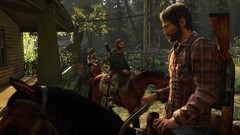
Have you played BioShock Infinite yet? How do you feel about how they used their supporting character, Elizabeth?
Neil Druckmann: I haven’t played it yet – I have a backlog to catch up on! But I will say that what we try to do with Ellie is to constantly keep her alive and feeling human. Whether you’re in or out of combat, Ellie should make interesting or surprising decisions on her own.
In a lot of games where you have NPCs that come with you, they’re annoying as you’re essentially babysitting them. We didn’t want that, but we didn’t want the opposite either – them sitting in the corner with enemies ignoring them. If that happens they don’t feel like a real person. For us, it was important that enemies do engage with Ellie. And in combat if you’re being attacked she will pick up a brick and help you. As you progress through the game and she’s spending more and more time with Joel, her abilities grow. You’ll feel like she’s changing as a person.
How expansive is the universe and mythos you’ve created. Have you left space for more stories?
Neil Druckmann: We’ve spent a lot of time researching the world and the disease and how institutions react to a pandemic. But then a lot of that stuff is in the background and we’re very conscious of keeping it there. Because that’s not what the story is about – it’s about these two characters and the journey they go on.
I think the world is ripe for more stories, but as far as the journey Joel and Ellie goes on it ends with this game. We were very conscious that we didn’t want to leave this story dangling. If we never do a sequel we’re ok with it, because we told the story we needed to tell.
What elements have you included to encourage repeat playthoughs?
Neil Druckmann: It’s the longest campaign we’ve ever made – in terms of pure hours. It’s long. And there are more collectables than we’ve ever had, and there’s a lot of backstory you can pick up on through them. You probably won’t find them on your first playthrough.
And then there are RPG elements in how Joel can upgrade his personal skills – how steady he is when aiming, how much health he has, and so on. And there are upgrades for each weapon too, which you can find by scavenging for parts. You won’t find those on your first playthrough, so we’ve got New Game+ encouraging players to go into scenarios and try different strategies.
It’s our most systemic game too. Stealth, how you strategise – each confrontation can play out differently. You can avoid combat altogether if you like. It’s hard, but you can do it.
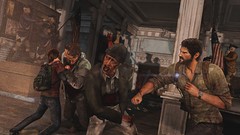
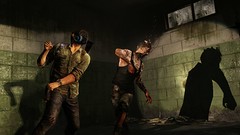
How have you gone about differentiating the combat from the Uncharted series?
Neil Druckmann: It’s a very different game. I know people try to compare it to Uncharted – but we’ve had players taken aback by how different it is, not just to our other games, but from any game they’ve played before.
For example, running away is a big strategy here. Usually in a shooter you don’t do that. You hunker down and blast away. Here, you’ll really need to run away at times and re-strategise, take stock of you inventory, craft new items and so on. There’s a learning curve at the beginning but then when you get into the flow it’s going to feel very different from anything you’ve played before.
How far is the finished game from the original concept you started out with?
Neil Druckmann: Surprisingly, the core of it has remained pretty much the same. We had the idea for these arcs for the characters and there’s something very specific we wanted to say with the story. That has stayed the same, even when vast parts of the story around it have shifted and gameplay elements have been cut out and replaced. The heart of it is Joel and Ellie and the bond that builds between them remained. That was our original vision and we stuck to it, I’m proud to say.
Any regrets?
Neil Druckmann: If I could go back and change anything? With the team we’ve had and the time we’ve had, we’ve made exactly the game we wanted to play. We always said – let’s not worry about what other people like, or what’s popular, or try to second guess what’s going to be successful to market. Let’s make the game we want to play that doesn’t exist right now. And that’s what we did.

- Subscribe via iTunes here
- Subscribe via RSS here
- Download the MP3 here on PS3, PS Vita or PC (Right-Click->Save As)
While delirious with the last bits of E3 planning, we manage to bring you the new releases for June 11th, a heaping helping of listener letters and Gems (thanks guys!), and some impressions and musing on The Last of Us (spoiler free!) at the tail end of the episode. See you at E3!
Stuff We Talked About- The Last of Us
- E3 2013
- PlayStation E3 2013 LiveCast show
- Next week’s PSN releases
- Aliens, and the Colonial Marines who hunt them
- Flying Hamsters
- Listener Gems of the Week
- The Last of Us
Send us questions and tips: blogcast@playstation.sony.com


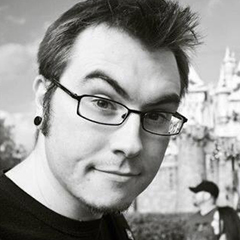
- Sid Shuman – PlayStation Social Media Manager
- Nick Suttner – PlayStation Account Support Manager
- Justin Massongill – PlayStation Social Media Specialist
[Editor’s note: PSN game release dates are subject to change without notice. Game details are gathered from press releases from their individual publishers and/or ESRB rating descriptions.]
- Thanks to Cory Schmitz for our beautiful logo and Dormilón for our rad theme song and show music.

- Edge (100/100): "At times it's easy to feel like big-budget development has too much on the line to allow stubbornly artful ideas to flourish, but then a game like The Last Of Us emerges through the crumbled blacktop like a climbing vine, green as a burnished emerald."
- Eurogamer (100/100): "It starts out safe but ends brave; it has heart and grit, and it hangs together beautifully. And it's a real video game, too. An elegy for a dying world, The Last of Us is also a beacon of hope for its genre."
- Giant Bomb (100/100): "There are bitter pills to swallow along the way, and nothing is taken for granted, not even characters. People live, people die. Sometimes it's fair, sometimes it's not. It's still a zombie game, but a sobering one. Take a deep breath."
- Gamespot (80/100): "The Last of Us stretches on for hours, forcing you to endure the suffocating atmosphere and unrelenting despair that citizens of this world have become accustomed to. And that time spent navigating the desolate wasteland draws you deeper inside."
- Polygon (75/100): "It's not a fun place to be, and likewise, the game isn't really a fun thing to play."

The Last of Us has a curious inertia though - the stumbling, inevitable momentum of a man off balance - and I couldn't deny it. Whatever laid ahead, I knew that their slow, torturous tumble was far from over.


Over the past few days we invited media to play our The Last of Us multiplayer mode called Factions. Most of these impressions are available online now but you’ll be seeing more as our review embargo on the game ends very soon. The multiplayer is an extension of the themes you’ll find in the single player game. The moment-to-moment survival present in the single-player campaign is integral to the multiplayer. You’ll feel tension and need to be intensely alert at all times. We want to show you a glimpse of what the gameplay looks like.
In Factions you’ll have to pick a side and roll with the Hunters or the Fireflies. Each player starts with a small clan of survivors that you need to keep alive and grow. There are two modes in which you can accomplish the growth and survival of your Clan. In Supply Raid, you’ll have to scavenge the area and keep your team alive. Your team has a pool of twenty reinforcements. Once the reinforcements have been exhausted, the match will go into sudden death. In Survivors, you’re going to have to be extremely vigilant. There are no respawns. Once you’re gone you’ve been eliminated until the next round. It’s a best of seven rounds in which the first team to win four rounds wins the match.

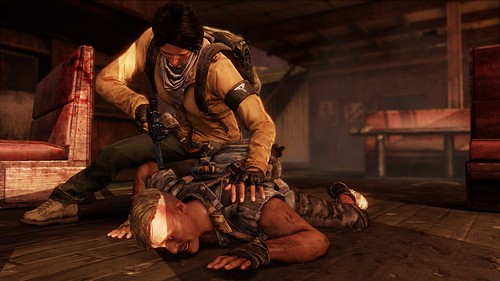
The core gameplay is very tactical, featuring the same crafting system found in the single player experience. Stealthy players can do well by using Listen Mode to locate enemies and flank them with silenced weapons. Teamwork is essential – fallen teammates can crawl to their allies and be revived, so players who stick together will excel. Melee combat is a brutal affair, and after downing a player you have the choice of performing an execution move. There are many more layers to explore, from the robust loadout system to the in-game economy. We can’t wait to see you online!
Pre-Order The Last of Us to receive some cool multiplayer items via the Survival DLC Pack. Pairing with the initial game offerings if you buy the Season Pass you’ll be entitled to receive even more multiplayer content when we release newly created DLC we’re planning for the game.
The Last of Us is available globally June 14, 2013.

Showing up casually late to the marketing party, here's a trailer featuring the multiplayer modes in The Last of Us. They seem to draw from the same well of brutality and paranoia evident in the single-player game.


Games on PlayStation platforms are renowned for their rich and vibrant artistic history. This is reinforced by PlayStation’s repeated inclusion in Into the Pixel, a videogame-themed art show that runs during E3 each year.
This year sees the induction of two new pieces from PlayStation’s ever-growing gallery. Remembering, from Naughty Dog’s impending survival epic The Last of Us, portrays a young, reflecting survivor in a post-pandemic world.
The Last of Us
Remembering by John Sweeney

“Lighting played a huge role throughout the creative process on “The Last of Us”. In this piece, I wanted the lighting to feel inviting and illustrate Ellie remembering what life could have been like before the pandemic.”
– John Sweeney, Concept Artist
And representing Wonderbook’s upcoming interactive mystery Diggs Nightcrawler, Three Blind Mice puts a noir spin on the ubiquitous nursery rhyme.
Wonderbook: Diggs Nightcrawler
Three Blind Mice by Tyler Schatz and Christina Faulkner
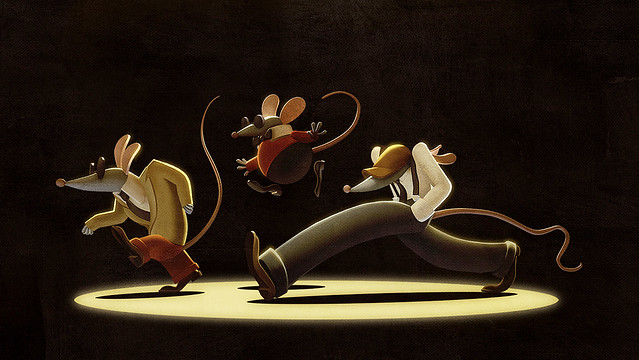
I really enjoyed working with such a hardworking, dedicated and talented team on Diggs Nightcrawler. For me, it is a major honor to have Diggs be a part of Into the Pixel among a tremendous foray of talented artists.
- Tyler Schatz, Moonbot Studios
Growing up, what I loved about video games is that they were set in fully fleshed out, unrealistic worlds that were crazy and cartoony. We wanted to do something like that with Diggs Nightcrawler and I’m really honored that our work was chosen for Into the Pixel.
– Christina Faulkner, Moonbot Studios

Those that don't have a copy of God of War: Ascension won't be able to play the free Outskirts level demo from The Last of Us until the game launches on June 14. To alleviate the pains of said folks, YouTuber HystericalGamez uploaded a full 14-minute video of their playthrough of the demo.
While watching the Outskirts level isn't the same as playing it, we recommend clicking the full-screen option and holding a PS3 controller while the demo video plays. Be wary of your boss believing that you're playing games at work, though.
[Thanks, Fabian!]

The demo contains the Outskirts level of The Last of Us, where Joel, Ellie and Tess must take on multiple infected - including the clickers we tussled with earlier this year.
The Last of Us is Naughty Dog's latest, the story of mankind's attempt to survive the fungi-infected remnants of an apocalyptic outbreak from two decades ago. Protagonists Ellie and Joel will also need to avoid other human beings on their journey across a ravaged United States.

"We scrapped everything at the beginning of Uncharted 1, and we had a perfectly good engine with the Jak & Daxter franchise," Straley tells Digital Spy. "We could have started with something there and then built off of it and only changed the pieces and parts as we needed, when we needed. And that really caused a lot of turmoil." Naughty Dog will now make modular adjustments to its existing tech as needed for story and game design.
The Last of Us launches on PS3 June 14. A season pass was announced earlier this week, marking Naughty Dog's first foray into single-player DLC content.

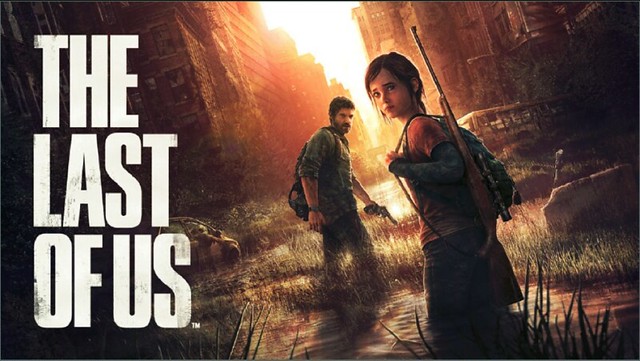
As you’ll find out in just two weeks’ time, Naughty Dog’s rabidly-anticipated new survival adventure The Last of Us does a phenomenal job of making you really care about its two protagonists, Joel and Ellie.
Partly through Neil Druckman’s nuanced writing, partly through the tactile, reactive gameplay, and partly through the pitch-perfect performances of the voiceover cast, The Last of Us packs an almighty emotional wallop to go with its blockbuster action set-pieces. It’s bar-setting stuff from the Uncharted studio, and these are characters that will resonate with you long after the game’s epic conclusion.
To find out a little more about how Naughty Dog pulled it off, we sat down for a quick chat with Ashley Johnson, the young actress bringing world-weary teen Ellie to life.

Ashley Johnson: My voice-over agent sent me the audition and asked if I’d be interested in doing a video game. She warned me that it was motion capture and that whole thing. I said yes, so I went out for the audition and met with Neil, Bruce and Evan. I did a few auditions and got the part. After that I put on the mo-cap suit and we did auditions for Joel, until we finally settled on Troy (Baker).
PSB: How did you get on with mo-cap? Was it your first time?
AJ: Yes, it was my first. It’s been really fun. It was definitely difficult at first to get over the fact that you’re wearing this really strange suit but once you get into the scene and get into the character… Neil would show us all the environments and we’d get to see pictures of the world we were in – that made it pretty easy. PSB: Does the suit make it more difficult to really inhabit the character? “I actually think it helps in a lot of ways.”
AJ: It definitely was very different for me because I’m not used to it. Sometimes when you’re playing a character, how you’re dressed or what shoes you have on, that changes the way you walk and how you act. So when you have that funny suit on – just a skin-tight jumpsuit – and your hands are covered, and you have a sock on your head, it can be a little challenging at first!
But a couple of hours in you get used to it. I actually think it helps in a lot of ways. You have to expand your imagination a little bit more, which I think is really good.
PSB: Have you played the final game yet?
AJ: I’ve played parts of it. I haven’t been given a finished copy yet. But I’ve played parts when I’ve visited Naughty Dog. I’ve been tempted to play more… but I want to wait. I want to experience it as a whole. I don’t like spoilers and I don’t like watching trailers – I like to play something from start to finish.
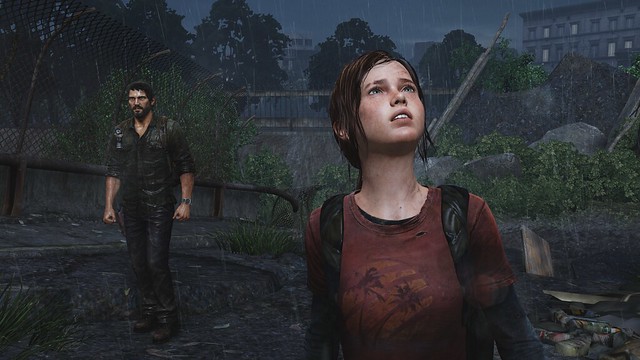
AJ: It’s very weird. I think if you were voicing a character and then you see that person walking around with your body movements you’d think it was weird too. Weird and exciting. Mostly I’m just so excited that it’s done and I can’t wait for people to play it, knowing where the story goes. It’s going to be good!



The game's season pass is priced $19.99, and Naughty Dog says that equates to a 30 percent saving on the individual pieces of DLC. In addition to the DLC, the season pass includes some 'Day 1 Bonuses,' namely a number of in-game upgrades and an "exclusive" 90-minute making of documentary called 'Grounded.' Which you probably won't watch on Day 1, seeing as you'll have just gotten the game.


The Last of Us arrives in just a few weeks. We’re happy to let you know you can pre-order the full digital edition of the game starting today on the PlayStation Store. The game will be a Day 1 Digital download — this means you can get it at midnight on June 14th. The digital edition features a unique download installer which will allow you to start playing the game once the game data is a little over half way downloaded.
The Last of Us is a universe rich in character and story with many facets that we could potentially explore for years. We’re getting started by announcing that there will be three packs of downloadable content for The Last of Us available after the game launches.
If you want to lock in all three of those DLC packs at discounted price, step up now and grab the Season Pass. The Last of Us Season Pass DLC is available for pre-order now on PlayStation Store — only $19.99 for three DLC Packs. This is a 30% savings over the pricing of the DLC packs individually. The Season Pass will be available at your local GameStop when you pick up The Last of Us, as well. Unique to Season Pass buyers are the following Day 1 bonuses:
 Day 1 Bonuses
Day 1 Bonuses
- Increased Crafting Speed
- Increased Healing Speed
- 9mm Reload Speed Upgrade
- Rifle Clip Capacity Upgrade
- Grounded – exclusive 90min “Making of The Last of Us” documentary
These Day 1 bonuses will help you get a head start and an edge in Joel and Ellie’s struggle to survive through the single player campaign of The Last of Us. The documentary, Grounded, is an in-depth look at the making of The Last of Us throughout its development by Area 5.
For the first time ever we’ll be offering single player DLC. The journey and cast of characters in The Last of Us lends itself to thorough narrative exploration and we’ve got more of the story to tell. The two other DLC packs will feature multiplayer content in the form of additional multiplayer maps and other expansions. You’ll be hearing about our multiplayer over the next couple of days. It’s an experience that continues the themes, tone and tension from the single player campaign and we can’t wait to tell you more about it.
Pre-Order the full digital edition of The Last of Us as well as The Last of Us Season Pass now on the PlayStation Store. Not going digital yet? Look for the Season Pass when you get your game in retail stores on launch day, June 14th, 2013.





















